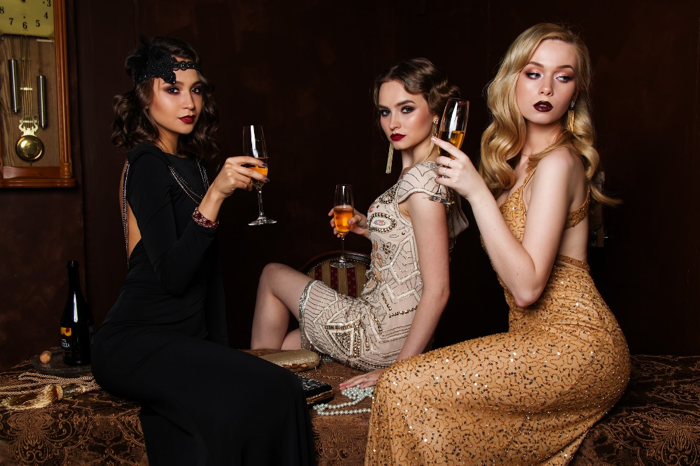Hairstyling has been around for a lot longer than you might think. Humans world-wide have an obsession with hair – straightening it, curling it, blow-drying it, braiding, cutting, colouring, accessorizing. It makes sense as hair is the easiest feature to change. And changing hairstyles can be accomplished without permanently altering your appearance. For some cultures, hair styles are extremely complex and reflect a person’s gender, stage of life and marital status as in some African tribes.
Hair can be dressed up or down, fancy or casual. You can create a number of effects by changing hair styles:
- Reflect your personality
- Attract attention
- Project a chosen persona
- Match your mood of the moment
People style hair as a means of expressing individuality but society has often used control of hairstyles as a means of manipulation and humiliation. Workplaces and schools have, in the past and to some extent today, enforced length and style guidelines of acceptable hair.
The first well-known hairstylist was famous in the 17th century but humans have been playing around with hairstyles for millennia. Let’s look at a more upbeat timeline of the human fascination with hair:
10th Century BC
- ancient Egypt
- royalty and commoners used ‘hair gel’ made from fatty substances to style hair
2nd Century BC
- first discovered Mohawk hairstyle
- preserved body of the Clonycavan man had a mohawk hairstyle held in place with ‘hair gel’ made of pine resin
1st Century BC
- ancient Romans and Greeks
- wore hair in ornate braids close to head often dusted with powdered gold
1st Century
- barbers not only cut hair and trimmed beards, they performed a number of surgical procedures
- bloodletting, trepanning, amputation were some of the procedures they performed
14th/15th Centuries
- hair long and braided
- either down back or coiled tightly against ears
16th Century
- women copied the red hair and pincurls of Queen Elizabeth
- elaborate headdresses and wigs were in style
17th Century
- first famous hairstylist was Champagne born in southern France
- moved to Paris, opened a salon and dressed the hair of the very wealthy until he died in 1658
18th Century
- Marie Antoinette began the new trend of powdered wigs adorned with things like model ships and birdcages
- the hours of upkeep gave rise to the hairdresser
19th Century
- era of ribboned updoes with feminine curls
- eventually gave way to hair piled into messy topknots
1920’s
- women gained the right to vote and celebrated that privilege by engaging in up till then typically male behaviors
- along with drinking and smoking, the bold and short bob became the hair fashion rage
1930’s
- first successful perm technique used
- allowed more permanent, long-lasting curls but required weekly salon sets to get that polished look
1940’s
- longer look back in style
- during WWII funds were low so women styled their own hair in elegant upsweeps like the Victory Roll
1950’s
- hairstyles become more rebellious after the conservative styling of WWII
- pompadour, ducktail and sideburns were popular men’s cuts while ladies sported poodle cut, bouffant and the pixie
1960’s
- social norms were being challenged and it was very evident in the edgier hairstyles of this decade
- men wore messy mop tops or long hairstyles while for women the beehive, bombshell, and the sleek pixie were popular
1970’s
- hairstyles in both sexes varied from long to short, spiked and bleached; hairstyling products were heavily marketed to both sexes
- shags, mullets, the Farrah flip, pageboy cut, the Mohawk cut were popular as was the middle part; perms, hair colouring and highlights were common
1980’s
- decade of excess; all the 70’s hairstyles were still popular but were bigger and more exaggerated
- hair was big, curly, crimped, colorful and accessorized; the still popular ponytail was worn high on the back or side and was held by a scrunchie
1990’s
- hairstyles like the pixie cut and bob were revitalized; bantu knots, box braids were very popular
- high ponytails and gelled updoes were popular as were butterfly clips, hair straighteners, frosted tips and crimping
2000’s
- Zig-zag hair parts, tree braids, side-swept bang over one eye, spiky curls, bandanas and black headbands, face-framing layered hair, hair both crimped and curled, super-straight hair and super-voluminous hair were some of the popular styles
What this history of hairstyling makes plainly evident is that humans have always and will always be fascinated with hair. Hair makes the man or woman. It sets the tone of a person’s unique look. Hair makes a strong statement. And because of this, people will always invest money, often significant amounts, in their hair. Cutting, styling, colouring and accessorizing will always be in demand as will the styling artists who can professionally deliver these services.
Learn More at Eden College
Looking for superior training as a hairstylist? Earn a Hairstyling Diploma at Eden College where you can get the proper knowledge and skills to begin this promising career!

